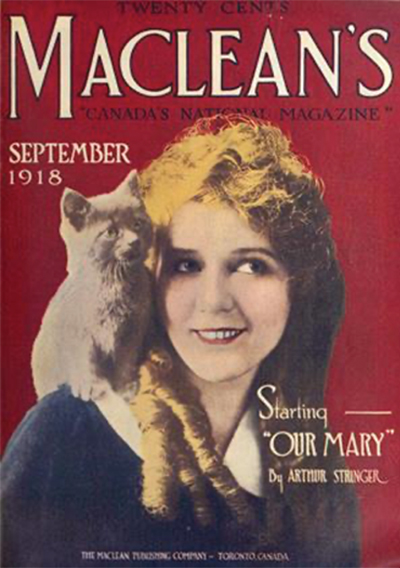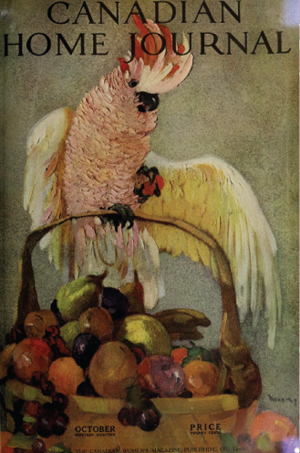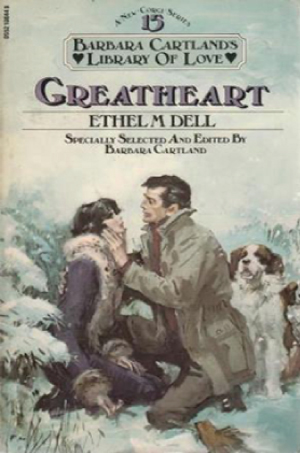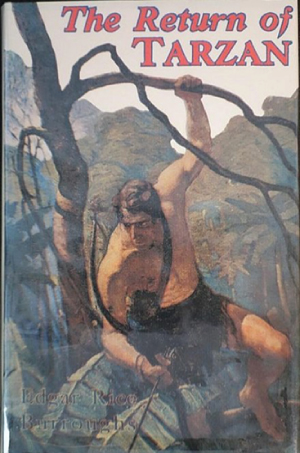
While I did all of the initial research for my Beneath the Alders series and for the first book in the series, The Innocent, I was greatly assisted in completing The Beleaguered and The Mending by the research skills of my good friend Colleen Mahoney, a pre-maturely retired librarian. For this newsletter, I asked Colleen a number of questions about what people were reading in the first decades of the 20th Century.
Lynne: As mentioned in the introduction to this newsletter, Jessie and her mother, Mary, were quarantined in their home while the worst of the Spanish Flu epidemic raged outside their walls. They both resolved to catch up on their reading though only Jessie was successful in this endeavour. What would they have read? What was popular in 1918?
Colleen: That’s such a fun question…and I have really enjoyed the research required to answer it! Let’s start with an important opening category before we get to books - magazines. It turns out that Canada had a thriving magazine industry from well before the turn of the 20th century. Many were intended for very specific audiences - as you will gather from the names of just a small selection of those I found available: The Canadian Farmer Yearbook, The Canadian Textile Journal, The Canadian Railroader, The Canadian Field Naturalist, and The Canadian Entomologist. But you didn’t have to be a specialist to read magazines…because there were at least two big “general interest” magazines. It is these two amongst the collection that I can best imagine Jessie and Mary reading in that time.
Maclean’s Magazine was founded by Lt. Col. John Bayne Maclean in 1905 under the name The Business Magazine. Initially, it was a collection of articles reproduced from leading Canadian, British and American periodicals. Maclean described it as “the Cream of the World’s magazines reproduced for Busy People”. Very shortly after it first publication however, Maclean changed its name to The Busy Man's Magazine and began including original articles on topics varying from women’s suffrage to national defence. It also started to include short works of fiction. In 1911, Maclean changed the name once again, this time naming it after himself and as we all know, it still bears his name to this day.

The issue pictured above (September, 1918) featured an informational piece called Your Girl at College and After by Ethel M. Chapman, a fictional story entitled the Three Sapphires: A Story of Mystery and War Intrigue by W. A. Fraser, and a true account of an incident at the front line in Europe called Buried Alive! The Experiences of a Canadian Sapper. I enjoyed them all. For anyone interested in reading old issues of Maclean’s, they are available online at archive.macleans.ca.
The Canadian Home Journal was Canada’s best-selling women’s magazine at the time. Its stated aim was “To publish a magazine which will be worthy of Canadian womanhood. To at all times keep both editorial and advertising columns clean, wholesome and truthful. To be a leader in thought and a fearless speaker in all vital questions. To, as far as possible, publish and reproduce the work of Canadians that our readers may become familiar with their own people, their own literature, and their own country, with its wonderful possibilities and glorious history.”
It included articles on beauty, childrearing, and decorating as well recipes and both short stories and longer serialized stories. The features in the 1918 issues included a serial called A King in Bablyon, a rip-roaring adventure with magic, mystery and quite a lot of romance thrown in for good measure. But one of the most enticing features for many young women, was its monthly fashion spread (see below) which would describe an article of clothing, provide the pattern number and estimate how much fabric would be required to sew it.

Lynne: So that’s magazines. What have we got for books?
Colleen: Let’s start with Canadian literature. Lynne, I know you are an admirer of the Famous Five (the five prominent suffragists who advocated for women’s and children’s rights). But, did you know that, in addition, to promoting equal rights, the famous Nellie McClung was also a popular author? Her first book Sewing Seeds of Danny published in 1908 was a national bestseller. She followed it up with several fiction works but, in 1918, she published an important non-fiction book called The Next of Kin and this book has an interesting backstory.
McClung was asked by the Society of the Red Cross to speak to the people of a small town in Northern Alberta. The crowd was primarily made up of women who stayed behind after the meeting to chat with McClung. They spent the time expressing their feeling about the war which had taken many of their sons, brothers and husbands to Europe perhaps never to return. Having lived in remote harsh conditions their whole lives they understood hard work, loss, loneliness and death. They chalked it up to God’s will and always believed in better days to come. But they could not understand the war. War was a man-made event and in their opinion useless and evil in every way. No woman, they declared, would raise sons to fight in wars. They wanted her to help them form a league of women to enforce peace in the world so that once the war ended the “world would not slip into its old ways until another war began”. (Sounds like they wanted to form a League of Nations with women at the helm!) They begged her to write a book about how they felt and thought and what the war looked like from a mother’s point of view. McClung wrote, “I got my commission there to tell fearlessly and hopefully the story of the Next of Kin… I am not to be the author of this book, but only the historian.” And so McClung traveled, and observed and conversed until she had collected enough stories to fill this book.
Lynne: A great example of popular non-fiction of the time. But what about poetry? I’ve written about the poet T.S. Eliot in this newsletter. Were other poets popular at this time?
Colleen: Yes, quite a few but I’ll only mention one in particular. One of the most popular poets of this time was Robert Frost – whose poems were part of the curriculum when we went to school. In 1916, Frost published Mountain Interval, a collection of 31 poems, which, like many of his collections centred on the beauty of nature. It included one of his most famous poems, The Road Not Taken as well as Birches, Out, Out and The Oven Bird. The poems of Robert Frost have never gone out of vogue and I can well believe that Jessie’s home would have had at least one of his collections.
Lynne: OK…now, what sort of fiction would a well-brought young lady be reading 1918?
Colleen: It’s highly likely that Jessie was a fan of Edith Wharton and if so, she might have read her book entitled The Marne which was actually published in 1918. By then, Wharton had already written six novels, including the popular House of Mirth, and was a sensation both in America and abroad. She went on the be the first women to win a Pulitzer Prize in 1921 for her book The Age of Innocence.
The Marne also has an interesting back story. When war broke out in 1914, Wharton was living in Paris where, rather than returning to the safety of the States, she remained and used her considerable wealth and influence to set up a number of charitable and humanitarian organizations. These included hostels and schools for refugees and convalescent homes for TB patients. She also found work for the unemployed. All of this ended up earning her the French Legion of Honour in 1916.
Surprisingly, Wharton was permitted access to the front lines. As a woman, this was almost unthinkable. The result was that she had material to write The Marne, a story about a wealthy American family vacationing in France when the German army invades. Teenager Troy Belknap and his mother are unable to leave France for some months after the invasion and wind up helping move supplies from Paris to the war-ravaged Marne Battle area. Troy longs to enlist but is prohibited by his age. After returning to the States and coming of age, Tory returns to France to become an ambulance driver at the front. As fate would have it, he arrives shortly before the second Battle of the Marne commences. Troy joins in the battle, where he is gravely injured, but is carried to safety by an unknown soldier and survives. Wharton uses the novel to criticize the attitudes of America’s upper class, while praising the bravery of the soldiers in the trenches fighting for their country’s liberty.
Lynne: Ok, have you got something lighter, perhaps, that you can tell us about?
Colleen: Of course, I’ve got romance novels and an adventure story.
Let’s start with the romance. Ethel M. Dell was a prolific English romance writer. Following eight rejections, her first book The Way of the Eagle was published in 1911. By 1915 it was in its thirtieth printing and she was rich and famous! Between 1911 and her death in 1939, she wrote some 30 novels and many more short stories. Apparently, she was loved by her devoted audience but harshly disparaged by the literary critics of the day as well as quite a few of her contemporary writers. (I read one of these short stories when I came across it in the Victoria College newspaper, the Acta Victoriana. It was fairly syrupy, but I could see how it would have had an appeal for young women of the time.)
In 1918, a Dell romance novel was published entitled Greatheart. Publishers Weekly listed it as a top ten best-selling book in the United States that year. It tells the story of Dinah, a bright and bubbly girl, who is taken out of a poor, abusive home by a kindly neighbor to vacation in the Alps. There she and her brother befriend a wealthy family with two brothers, one of whom proposes marriage. At first, Dinah is thrilled… but on reflection, is he really the right brother for her to marry? You’ll have to read it to find out! Edith M. Dell still has her fans today. A great number of her books are listed on Goodreads and most have very respectable ratings.

Now for the adventure book category. Edgar Rice Burroughs was a very popular writer in the early 20th century. His book The Land that Time Forgot was published in 1918. While it’s possible that Jessie might have read this, I think it much more likely that she might have spent more time indulging in the escapism offered by the Tarzan of the Apes series. I was vaguely aware that there was more than one book in this series, but was astonished to learn that there ended up being 26 in total!
The first (Tarzan of the Apes) was published in 1912 to great acclaim. I can imagine Jessie getting very wrapped up in both the high adventure and romance in the jungles of Africa, Victorian England and the United States. While Tarzan and Jane fall in love, the book ends with Jane engaged to Tarzan’s cousin and Tarzan left bereft and alone. The second book in the series, The Return of Tarzan, sees Jane, still unmarried, reuniting with Tarzan in Africa where perilous situations threaten the lives of all involved. Ultimately, Jane breaks off her engagement and marries her true love…you guessed it…Tarzan.
Three more Tarzan books were published before 1918, involving Jane and their young son, Jack, and most taking place in England and in Africa. All are fast-paced, feature outrageous plotlines in exotic locations and provide plenty of romance. They seem like the perfect mix to distract young women obsessing about the Spanish Flu… or for that matter Covid 19. I wish I had thought to pick them up at some point over the past two years!



To Order Your Copies
of Lynne Golding's Beneath the Alders Series


